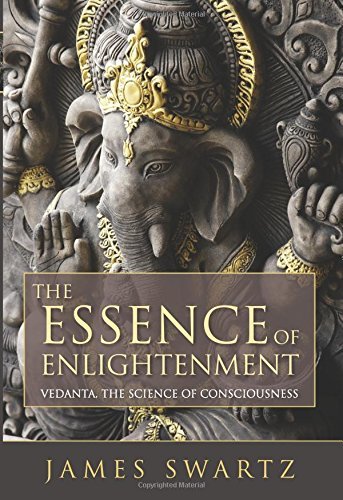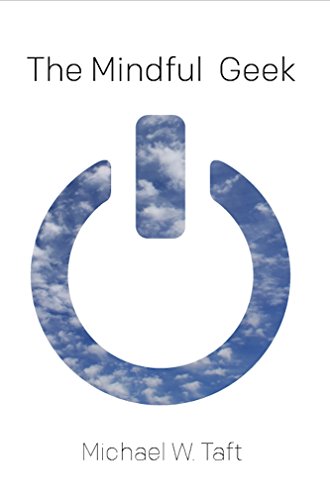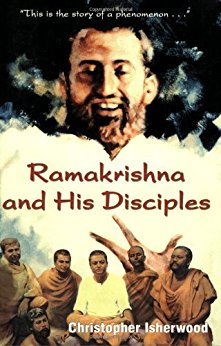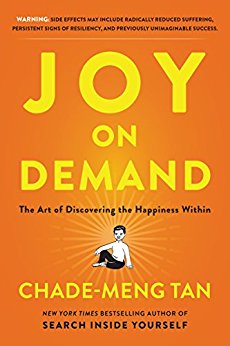I’ve been meditating, on and off, for about 14 years. Only in the last three years or so did I start to get much in the way of results from it.
Meditation and cultivation practices do things. They have real effects on people, especially if done diligently and well. Certain practices, done wrong, can mess you up, in much the same way that physical exercise, done wrong, can injure you–sometimes permanently.
One of my friends described to me the time he ran a meditation class for yoga teachers in a major American city. My friend is fat, over 250 pounds, and the yoga teachers were the elite: fit, supple, glowing with health. As they came into the room, and looked at him, he could see what was going through their minds.
He said, “All the time you have spent perfecting your bodies, I have spent perfecting my mind. Let us begin.”
(The body and the mind aren’t really two things, but hey…)
This became so long I’ve split it into two parts. I’ll link Part Two when it is published, most likely Friday.
All that said, let’s start.
 The Essence of Enlightenment, James Swartz
The Essence of Enlightenment, James Swartz
Judging by how dog-eared this book is, it’s probably my most read cultivation book. This is the clearest explanation of one type of enlightenment I’ve ever read.
Swartz belongs to the Jnani-Yoga style of cultivation, specifically Indian Vedanta. This is a knowledge based method, where the cultivator uses reason to understand the reality of experience, eventually arriving at witness-consciousness: You view the world and yourself as something you’re just watching.
This is an accurate portrayal of how the human mind, or rather body, on close introspection, actually works. The feeling of making choices is illusionary, and when you look at the body, thoughts, emotions, or other sense objects, you find that none of them are you (alternatively, they all are, but that’s not what this book is about).
We aren’t trained to think that way; it is not intuitive, and Jnani Yoga and Vedanta are good antidotes: They are logical arguments which help to stop the mind from screaming “bullshit” (as many readers probably are).
This book, while brilliant, is limited in certain ways. Swartz has little time for meditation as commonly understood, other than the close examination of arguments he prescribes Karma Yoga, which is doing things without worrying about the results. While Karma Yoga definitely works for some people, and is a good attitude for anyone on the cultivation path, meditation can be useful for many people.
Another problem is that Swartz expects people to be “qualified,” which means detached and basically psychologically healthy. Most people coming to cultivation aren’t as healthy as Swartz requires for success; people come because they’re hurting.
The third “issue” is that Swartz’s enlightenment, witnessing consciousness, isn’t quite the only kind. There’s another, where one becomes “that in which everything exists and from which everything came,” and there are different interpretations than “witness,” such as Buddhist “no self.” (And blah, blah, other forms that are too complicated and tedious to go into here.)
Still, I recommend this book very highly. It may be the first clean look at where you’re trying to go you read. And, having dealt with Swartz a bit, he’s a good guy, who is genuinely trying to help.
 The Mindful Geek, Michael Taft
The Mindful Geek, Michael Taft
Some people need their meditation instructions served atheistically with a side of science. If that’s you, Taft has you covered. This falls into the general class of books that explain how meditate and add scientific studies about meditation either working, or studies about the brain which support the mental models on which meditation is based.
Taft is an instructor who works primarily in the tradition of Shinzen Young, who has a very detailed and complicated system of primarily Vipassana (investigatory) meditation. Modern mindfulness, to use Shinzen’s own term. Shinzen and Taft are both the real thing, in my opinion. They’ve put in the work over decades.
This book includes quite a few different styles of meditation, but it’s primarily about noting meditation. You introspect, you examine something, you attach a word or phrase to it, you move on. I came to this style late, but it’s very effective and there are people it’s taken, essentially, all the way. (I find it boring, but that doesn’t mean it doesn’t work.) It has a very Theravada Buddhist feel to it, though Taft’s background is mostly Zen and Hindu.
And you don’t have to believe a thing about God, spirit, souls, or anything else. It’s all completely materialistic.
A good first book or a good book for those with some experience looking for other types of meditation than what they started off with.
 Ramakrishna and His Disciples, Christopher Isherwood
Ramakrishna and His Disciples, Christopher Isherwood
So, Ramakrishna was a famous Hindu Holy man, a Bhakti (devotional, ecstatic worshipper) of Kali. His main disciple, Vivekananda, was the first person to introduce Hindu spirituality, including a form of meditation, to the modern West.
This book isn’t useful if you’re looking for instruction. It doesn’t include much on how to meditate, and most of it is firmly in the theistic camp: For Ramakrishna, God exists, gods existed, he saw them regularly, and talked to them and so on. This is, for atheists, a full on crazy.
But Ramakrishna was a seeker, he wanted to experience every type of Awakening. He did have the full non-dual realization (and that’s much of what Vivekananda spread to the West), but he spent time worshipping as Muslim, a Christian, and seeking out experiences of a variety of Hindu Gods.
Firmly on the “right hand” side, he was celibate, lived in a temple and didn’t like tantric practices (no sexual practices here, no sitting on corpses in graveyards, etc.).
Right, so with all that, why read it?
Partly for Bhakti-style cultivation: Intense love for a divine figure or guru, works. It really, really works. That sort of absorption in one thing unifies the mind very well and heals it of a lot of its psychological issues too.
This is the sort of practice which leads to “If you see the Buddha on the road, kill him.” Pouring everything into the love of your god, to get the final liberation, you have to transcend the God. Ramakrishna had to “wield the sword of non-discriminatory knowledge” and “kill” Kali to get there. Then, having done so, he hung out with Kali a bunch more, because, hey, why not?
A lot of people on the theistic path get stuck just short of the big realization because having a personal, loving relation with God (or Guru standing in for God) is really, really nice and they don’t want to give God up.
But this book is also, well, lovely. Ramakrishna is lovely and touching. The world he lives in, of Gods and spirits and, well, magic, is lovely. The stories are great. They’re of people who live lives that most of us in the West can barely conceive, full of gods and devotion. Most see this as craziness.
I’ve read this book a bunch of times, and loved it each time.
 Joy On Demand, Chade-Meng Tan
Joy On Demand, Chade-Meng Tan
When Tan wrote his book he worked for Google. His title, printed on his business card, was “A Jolly Good Fellow, Which Nobody Can Deny.”
So there’s that.
This is a meditation manual. It’s one of the better ones I’ve read. The fact about meditation is that it can often be a shit show: There comes a point where garbage you’ve suppressed (or not) starts coming up, and it sucks. And in certain practices there can be a lot of pain and suffering.
A lot of meditators stall out when they hit this point, they quit. Meditation is so often sold as being wonderful that people can’t handle when it turns to crap.
The best antidote for that, other than truthfulness, is emphasizing joy and bliss and happiness in meditating. The right types of meditation really are wonderful experiences AND having that wonderfulness as a base from which to work will make everything else so much easier–including some of the unavoidable crap that comes up.
Tang’s manual is oriented towards getting you that base, to making meditation enjoyable as quickly as possible.
This is an excellent way to start meditating and if your practice has stalled out, it’s an excellent way to restart it. The enterprise of reducing or ending suffering shouldn’t be some sort of grim death march.
Tang has an odd sense of humour, which all readers may not like. But the book is an enjoyable, easy read, with enough explanations of technique, theory (so you know why you’re doing it and stick with it), and stories to keep you going.
Remarks
I’ll have a number more books next time, and some theoretical explanations of what you’re doing and why. In the meantime, if you want a first book, Taft’s or Tang’s will do you well. If you want to know why you’re bothering, read Swartz’s “Essence of Enlightenment,” and if you want to visit a wild and crazy–but wonderful–world, read about Ramakrishna and his disciples.
If none of these work for you, I’ll have at least two more books suitable to starting to meditate in Part Two, along with various other, scrumptious reads.
The results of the work I do, like this article, are free, but food isn’t, so if you value my work, please DONATE or SUBSCRIBE.

DMC
“Book 4” part 1(Mysticism) and “Eight Lectures on Yoga” by Aleister Crowley expound the classic 8 limbed or Ashtanga Yoga promulgated by Patanjali and Yajnavalkya in terms suited to the layman. Crowley is at some pains to describe the hows and whys of Yoga and Mysticism generally and was certainly one of the first Western exponents of such with practical first hand experience, having studied under the Solicitor-General of Ceylon and with his friend Allen Bennet(later Bhikku Ananda Mettaya, a co-founder of the Sangha in the West). Can also reccomend Vivekanda’s little books on Raja Yoga and Jnana Yoga, though they may be a little off putting if one is not already familiar with Hindu thought.
Tomonthebeach
I started meditating at 14 – it was an exercise required by my priests. I am not sure how easy it is to acquire a meditative state as an adult or from reading books. I am a bit ZaZen, so trying to recall tips from books would seem distracting.
Hours of sitting and staring and trying to be aware of nothing and everything, something called enlightenment (just a label for a feeling) happens. It gets easier as you age, just like pushups.
Before retiring, while others played with their mobile phones waiting for Godot, the boss, or the elevator to stop – I often snuck away briefly. Elevators can be uplifting moving in either direction.
V. Arnold
Tomonthebeach
September 21, 2017
…something called enlightenment (just a label for a feeling) happens…
I beg to differ; it is no such thing.
But then, what the hell do I know…
Stirling Newberry
The Book of Five Rings
Only Don’t Know
Ten Bears
It’s a Zen thing. Or not. As it may, or may not, be.
Bill H
This is kind of silly, but I like it and, increasingly after 35 years, am actually beginning to understand something that my first sponsor said to me.
Everything that you think you know, he said, you actually don’t know. As time goes on and you learn how little you know you will actually know more but will feel like you know less. It will be more and more peaceful to know less and less until, when you feel like you know nothing, you will be fully at peace and will know everything.
He was a very wise man, and did a great deal for me. Died in a state of great contentment.
nihil obstet
I’ve been meditating, on and off, for about 14 years. Only in the last 3 years and some did I start to get much in the way of results from it.
What kept you going during the 11 years when you were meditating but not getting much in the way of results? The obvious response would be “This isn’t working” after maybe six months. How did you avoid that?
subgenius
The Watercourse Way, Alan Watts’ final book,..and the I-Ching, Tao Te Ching, and ZhuangZi…
…and none of the books that use ideas of imagining or visualizing!
Alex
One of the stories about Mary Pinchot Meyer was how she got JFK to try LSD, which changed his view towards trying to accomplish world peace.
Enlightenment, as they say.
Don’t know if it’s true or not.
Microdosing is getting some press these days.
Before it was outlawed, Timothy Leary had been working with it for therapeutic purposes.
Ten Bears
The VA is using it to treat PTSD. Experimented in the 50s.
Ian Welsh
Nihil,
even then meditation had some nice effects, there was just no real progress in terms of insight and so on. I got stuck doing concentration exercises that had little value by themselves if one doesn’t turn insight on (at least at the levels of concentration I was at.)
Steeleweed
In my teens, I began the sophomoric exercise of seriously examining religion; reading widely, comparing beliefs, trying to resolve disagreements. I finally reduced my understanding to a set of paradoxes, which didn’t really help much as far as grasping any Ultimate Truth. It did, however, provide me with an enlightening and useful experience.
I was in the USAF at the time, stationed in Monterey California. In the evenings, I sometimes walked from the Presidio to a Naval Station about five miles away. One night, as I strolled along musing that “A is true and B is true and A & B are mutually exclusive”, my mind just ground to a halt. I had inadvertently used a technique of Zen practice to suspend certain – but not all – mental processes. I did not stop perceiving, but I stopped filtering, comparing, connecting.
I walked the 5 miles back to the Presidio, crossing downtown Monterey – bright lights, noises, car traffic, busy streets, hundreds of people – without any awareness of the journey until I got back to my barracks.
Among other things, this taught me that we need only a minuscule part of our mental capabilities to navigate the world. Most of our mental activity is not only unnecessary, it is often (usually?) just a form of intellectual doodling, a busywork process, rather like keeping an engine revved up waiting for the light to change.
***
Greenwich Village in the ’60s added new dimensions. Discussing LSD, I suggested it would be possible to ingest it without any effects at all. Naturally, my drug-savvy friends ridiculed my innocent ignorance – until I took it without any effect at all. Subsequent ‘trips’ were taken until I found it of no real value. (I was not looking for the Technicolor Dreamscape, but rather to investigate my mind). It did expand my grasp of the capabilities of the Mind, but once discovered, I no longer needed LSD to reach hatever ‘expanded consciousness’ it provided. I gave it up because it had served it’s purpose.
For me, the value of meditation is the process, not the end. I find it creates a dual awareness, one focused on some particular thing and the other acknowledging and dismissing intrusive random thoughts that would otherwise disturb the first mental track. For me, the effort of focus yields the value. And it really doesn’t seem to matter the subject of that focus – from my belly button to the nature of existence. The process is the message.
JW
Is that the same Christopher Isherwood of “I Am Not a Camera”?!
Ian Welsh
Yup. He wrote a book called “My Guru and I” also. He was a disciple of a third generation guru descended from Ramakrishna’s line, actually.
metamars
Meditators are better at proving mind over matter (for light lift, quantum events….)
See New Experiments Show Consciousness Affects Matter ~ Dean Radin Ph.D https://www.youtube.com/watch?v=nRSBaq3vAeY
metamars
I recommend lectures on meditation by Dora Kunz, a one-time president of the Theosophical Society, who was extremely psychic, also. AFAIK, you have to buy these on CD. I also recommend her extremely positive lectures on karma, including very helpful advice on forgiveness.
Dora was taught to meditate from a young age. She liked to joke about how, while other parents would make sure that their kids ate their vegetables or washed behind their ears, her mother would always make sure she had done her daily meditation. (That’s my best recollection of what she said, not verbatim.)